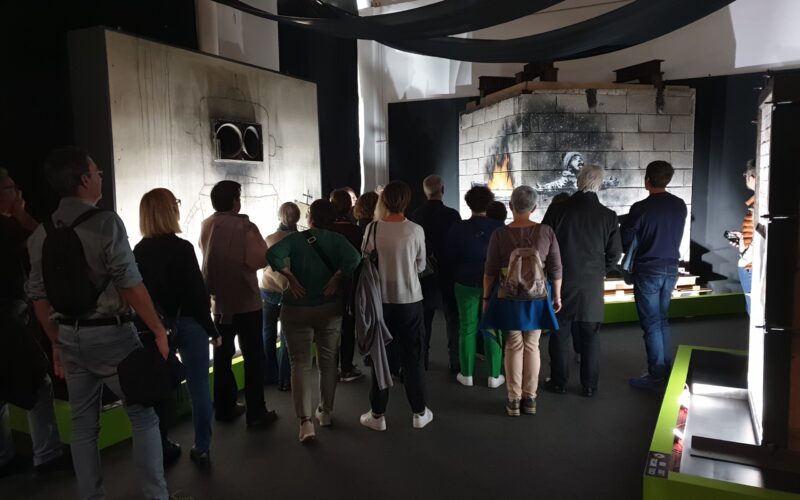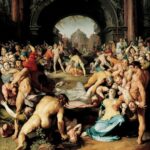In an era where the dichotomies of art blend and blur, the “Banksy. Painting Walls” exhibition at the Villa Reale in Monza raises questions that go beyond the mere display of artworks. Bringing three original works of Banksy to Italy, painted between 2009 and 2018, the exhibition invites viewers on a journey into the imagination of the mysterious artist who has profoundly marked the fabric of contemporary art.
Juxtaposing three actual walls, silent witnesses of battles for the climate, rights, and inequalities, with works like “Girl with Balloon” and “Love is in the Air,” the exhibition weaves an intense visual narrative. But this transfer from the urban context, from the street to the exhibition space, forces us to reflect: is it possible to museumize irreverence? Can walls torn from their original settings still scream with the same power their messages of rebellion and hope?
“Season’s Greetings” presents us with a shocking duality: the innocence of a child welcoming snow, which turns out to be toxic ash, is a punch in the stomach of our environmental conscience. Its original location in Wales, once a land of coal mines, multiplied this effect; removed, does its strength diminish or universalize?
“Heart Boy,” nearly two meters tall, captures the observers’ gaze with the disturbed depth of a child who, in a silent but powerful request, evokes peace and love, symbolized by the pink heart in the background. Its physical presence in the exhibition calls for a need for human contact that transcends the boundaries of any wall.
The last, “Robot/Computer Boy,” is a representation of the human struggle against the growing wave of digitalization. The composition of the boy transfigured into a robot echoes the fears and hopes of a society teetering between technological progress and alienation.
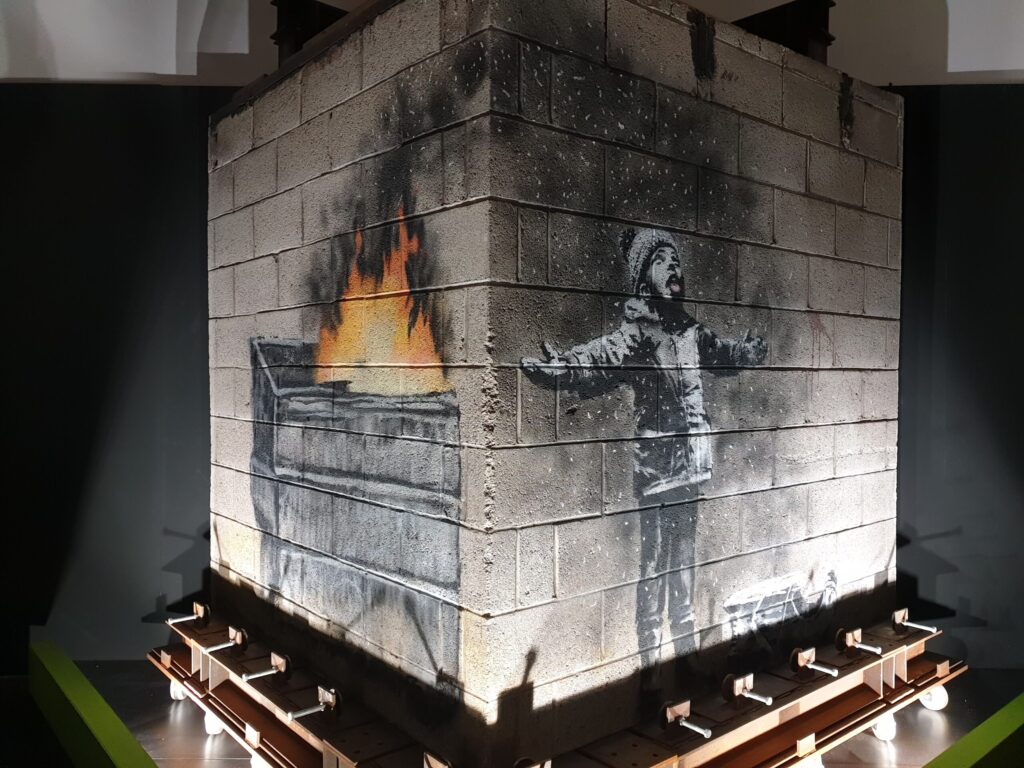
This exhibition, therefore, becomes a meta-artistic reflection on Banksy’s art itself, and more generally, on the future of street art in a world that tends to institutionalize even the wildest rebellions. Certainly, the walls of the Orangerie of the Villa Reale di Monza cannot replicate the urgency of a windy alley or the atmosphere of a lively square, but perhaps they can offer a different echo chamber, a new life to messages that would otherwise be destined to fade under the rain or be erased by the hand of man.
The paradox of Banksy – his celebration and his capture – is reflected in the faces painted on the walls that now live in a limbo between their ephemeral origin and their eternal preservation. “Banksy. Painting Walls” is not just an exhibition; it’s an open dialogue, a query about the preservation of art and its rebellious essence. We are called to contemplate, and perhaps, through this new perspective, we can learn to look not only with our eyes but also with our hearts and minds.
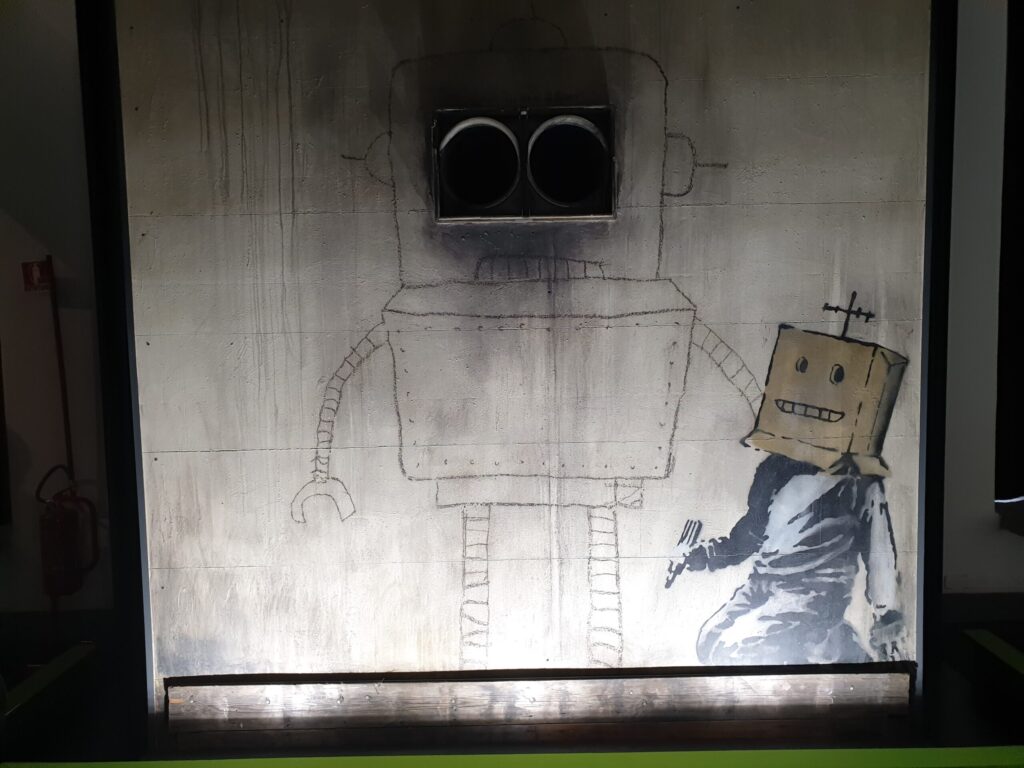
Beyond the Street: Banksy's Rebellion within Museum Walls
Banksy’s irreverence, like that of every true street artist, is rooted in the context in which it is born: the pulsating streets, the neglected corners of metropolises, the neighborhoods that tell unheard stories. It is there that Banksy’s art finds its most authentic voice, engaging with the casual passerby, surprising the distracted inhabitant, challenging the occasional observer to stop, think, and feel provoked. The question arises spontaneously: is it possible to museumize this form of art without emptying it of its original spirit?
The walls exhibited at the Villa Reale di Monza, like chests guarding stories of social challenges, place us in front of this contradiction. The process of uprooting a work from its natural setting and imprinting it with the seal of musealization might seem like an act of violence against the artist’s initial intent. The wall that once breathed with the city, observed and was observed, lived and transformed with the passing of days and seasons, becomes a static object, silent, sheltered from time and unlooked-for gazes.
Yet, this transformation from street art to museum piece also has the power to preserve, to give new life, and to spread the messages that Banksy strives to communicate. The walls become ambassadors of universal themes, bringing issues of social justice, environmental crisis, and technological reflection to a perhaps wider, albeit different audience.
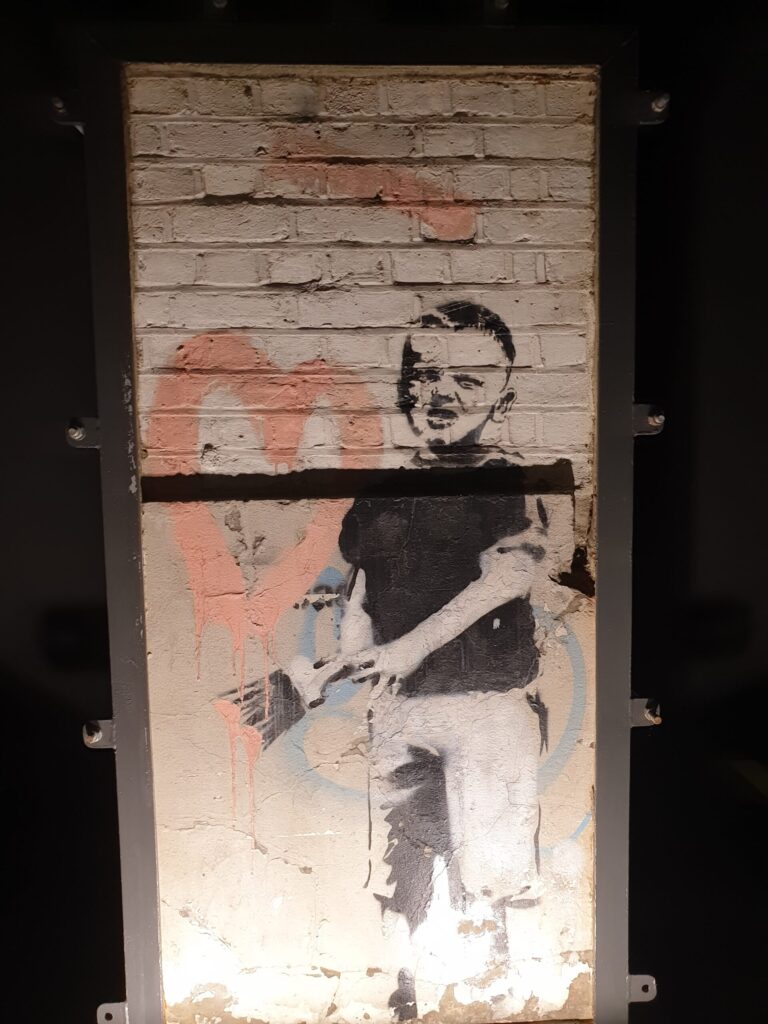
But do these messages maintain their original power? Or perhaps, and here lies the real question, does their power to provoke reflection transform? In museums and galleries, Banksy’s art meets an audience that approaches with a predisposition to contemplation and the search for meaning, unlike the casual encounter with street art. The walls torn from their urban origins can still speak, but their language now requires an interpreter, a new frame of reference that is no longer that of the street.
In this new life, the rebellion of Banksy’s works is tamed, perhaps, but not necessarily silenced. In a venue like the Orangerie of the Villa Reale di Monza, Banksy’s art no longer shouts suddenly from the visual periphery, but whispers, incites a more intimate and profound dialogue with those who have come specifically to listen.
Ultimately, museumizing Banksy’s irreverence is a paradox that contemporary art embraces vigorously. If on the one hand there is a risk of diluting the rebellious spontaneity inherent in street art, on the other it offers an opportunity for renewed dialogue, a bridge between worlds that might otherwise never meet. And in this dialogue perhaps lies the new power of Banksy’s messages: a changed but not extinguished voice, still capable of inspiring rebellion and hope, albeit in a transformed guise.

